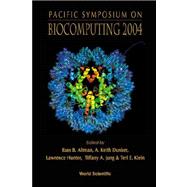
What is included with this book?
| Preface | |
| Design of a High-Throughput Assay for Alternative Splicing Using Polymerase Colonies | p. 5 |
| The Effects of Alternative Splicing on Transmembrane Proteins in the Mouse Genome | p. 17 |
| Genome-Wide Detection of Alternative Splicing in Expressed Sequences Using Partial Order Multiple Sequence Alignment Graphs | p. 29 |
| Detection of Novel Splice Forms in Human and Mouse Using Cross-Species Approach | p. 42 |
| Extensive Search for Discriminative Features of Alternative Splicing | p. 54 |
| Transcriptome and Genome Conservation of Alternative Splicing Events in Humans and Mice | p. 66 |
| A Database Designed to Computationally Aid an Experimental Approach to Alternative Splicing | p. 78 |
| Pedigree Generation for Analysis of Genetic Linkage and Association | p. 93 |
| A Markov Chain Approach to Reconstruction of Long Haplotypes | p. 104 |
| Tradeoff Between No-Call Reduction in Genotyping Error Rate and Loss of Sample Size for Genetic Case/Control Association Studies | p. 116 |
| A Comparison of Different Strategies for Computing Confidence Intervals of the Linkage Disequilibrium Measure D' | p. 128 |
| Multiplexing Schemes for Generic SNP Genotyping Assays | p. 140 |
| Haplotype Block Definition and Its Application | p. 152 |
| Part-of Relations in Anatomy Ontologies: A Proposal for RDFS and OWL Formalisations | p. 166 |
| Building Mouse Phenotype Ontologies | p. 178 |
| An Evidence Ontology for Use in Pathway/Genome Databases | p. 190 |
| Terminological Mapping for High Throughput Comparative Biology of Phenotypes | p. 202 |
| The Compositional Structure of Gene Ontology Terms | p. 214 |
| Defaults, Context, and Knowledge: Alternatives for OWL-Indexed Knowledge Bases | p. 226 |
| Biological Nomenclatures: A Source of Lexical Knowledge and Ambiguity | p. 238 |
| Investigating Implicit Knowledge in Ontologies with Application to the Anatomical Domain | p. 250 |
| ProGreSS: Simultaneous Searching of Protein Databases by Sequence and Structure | p. 264 |
| Predicting the Operon Structure of Bacillus subtilis Using Operon Length, Intergene Distance, and Gene Expression Information | p. 276 |
| Combining Text Mining and Sequence Analysis to Discover Protein Functional Regions | p. 288 |
| Kernel-Based Data Fusion and Its Application to Protein Function Prediction in Yeast | p. 300 |
| Discovery of Binding Motif Pairs from Protein Complex Structural Data and Protein Interaction Sequence Data | p. 312 |
| Phylogenetic Motif Detection by Expectation-Maximization on Evolutionary Mixtures | p. 324 |
| Using Protein-Protein Interactions for Refining Gene Networks Estimated from Microarray Data by Bayesian Networks | p. 336 |
| Motif Discovery in Heterogeneous Sequence Data | p. 348 |
| Negative Information for Motif Discovery | p. 360 |
| The Status of Structural Genomics Defined Through the Analysis of Current Targets and Structures | p. 375 |
| Protein Structure and Fold Prediction Using Tree-Augmented Naive Bayesian Classifier | p. 387 |
| Clustering Protein Sequence and Structure Space with Infinite Gaussian Mixture Models | p. 399 |
| Accurate Classification of Protein Structural Families Using Coherent Subgraph Analysis | p. 411 |
| Identifying Good Predictions of RNA Secondary Structure | p. 423 |
| Exploring Bias in the Protein Data Bank Using Contrast Classifiers | p. 435 |
| Geometric Analysis of Cross-Linkability for Protein Fold Discrimination | p. 447 |
| Protein Fold Recognition Through Application of Residual Dipolar Coupling Data | p. 459 |
| A Mixed Integer Linear Programming (MILP) Framework for Inferring Time Delay in Gene Regulatory Networks | p. 474 |
| Robust Identification of Large Genetic Networks | p. 486 |
| Reconstructing Chain Functions in Genetic Networks | p. 498 |
| Inferring Gene Regulatory Networks from Raw Data - A Molecular Epistemics Approach | p. 510 |
| A Biospi Model of Lymphocyte-Endothelial Interactions in Inflamed Brain Venules | p. 521 |
| Modeling Cellular Processes with Variational Bayesian Cooperative Vector Quantizer | p. 533 |
| Symbolic Inference of Xenobiotic Metabolism | p. 545 |
| Finding Optimal Models for Small Gene Networks | p. 557 |
| Pathway Logic Modeling of Protein Functional Domains in Signal Transduction | p. 568 |
| Modeling Gene Expression from Microarray Expression Data with State-Space Equations | p. 581 |
| Table of Contents provided by Blackwell. All Rights Reserved. |
The New copy of this book will include any supplemental materials advertised. Please check the title of the book to determine if it should include any access cards, study guides, lab manuals, CDs, etc.
The Used, Rental and eBook copies of this book are not guaranteed to include any supplemental materials. Typically, only the book itself is included. This is true even if the title states it includes any access cards, study guides, lab manuals, CDs, etc.